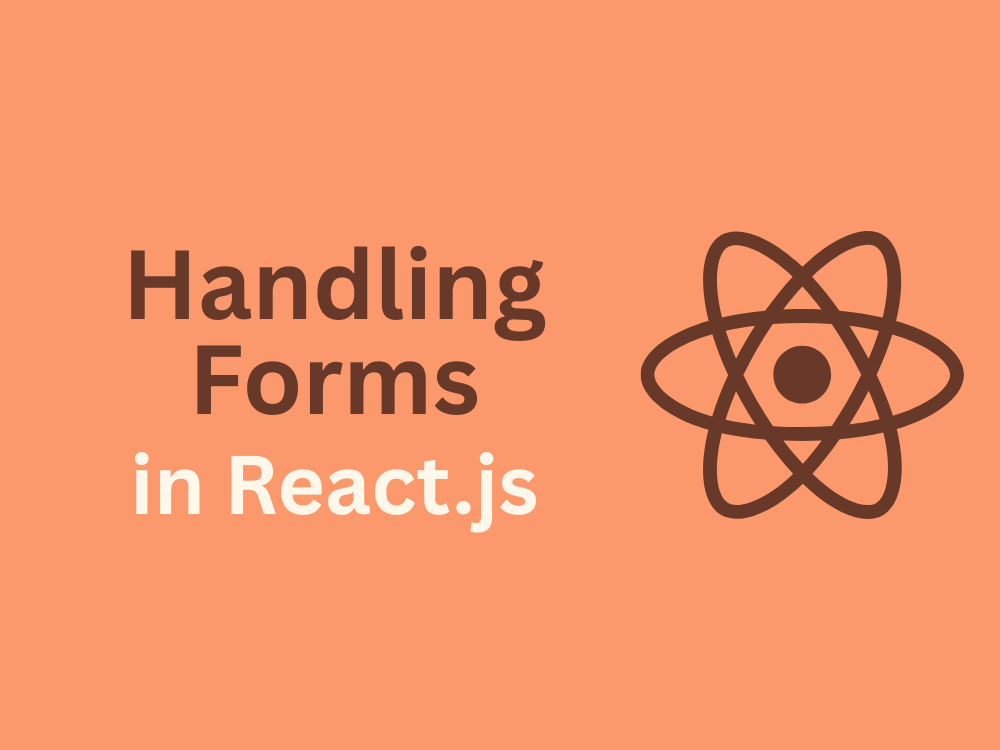
Day 15 – Handling Forms in React
Learn handling forms in React with controlled vs uncontrolled components, real-time validation, and examples for beginners.
Forms are one of the most common parts of any web app — login pages, signups, feedback forms, checkout forms, etc.
In React, form handling is slightly different from vanilla HTML because React controls the state of inputs. This gives us more power but also requires a proper approach.
In today’s blog, we’ll cover:
- Controlled vs Uncontrolled Components
- How to handle form inputs in React
- Simple form validation examples
Controlled vs Uncontrolled Components
Controlled Components
- In a controlled component, the form input’s value is managed by React state.
- Every change updates state using
onChange.
Example:
function ControlledForm() {
const [name, setName] = React.useState("");
const handleSubmit = (e) => {
e.preventDefault();
alert(`Hello, ${name}`);
};
return (
<form onSubmit={handleSubmit}>
<input
type="text"
value={name}
onChange={(e) => setName(e.target.value)}
placeholder="Enter your name"
/>
<button type="submit">Submit</button>
</form>
);
}✅ Here, name is always synced with React state.
Uncontrolled Components
- In an uncontrolled component, the form input is handled directly by the DOM using
ref.
Example:
function UncontrolledForm() {
const inputRef = React.useRef();
const handleSubmit = (e) => {
e.preventDefault();
alert(`Hello, ${inputRef.current.value}`);
};
return (
<form onSubmit={handleSubmit}>
<input type="text" ref={inputRef} placeholder="Enter your name" />
<button type="submit">Submit</button>
</form>
);
}✅ This is simpler but gives less control. Controlled components are recommended for most cases.
Handling Multiple Inputs
function SignupForm() {
const [form, setForm] = React.useState({
name: "",
email: "",
password: "",
});
const handleChange = (e) => {
const { name, value } = e.target;
setForm((prev) => ({ ...prev, [name]: value }));
};
const handleSubmit = (e) => {
e.preventDefault();
console.log(form);
};
return (
<form onSubmit={handleSubmit}>
<input
name="name"
value={form.name}
onChange={handleChange}
placeholder="Name"
/>
<input
name="email"
value={form.email}
onChange={handleChange}
placeholder="Email"
/>
<input
type="password"
name="password"
value={form.password}
onChange={handleChange}
placeholder="Password"
/>
<button type="submit">Signup</button>
</form>
);
}✅ This is scalable for large forms.
Adding Form Validation
Example: Simple Validation
function LoginForm() {
const [email, setEmail] = React.useState("");
const [password, setPassword] = React.useState("");
const [error, setError] = React.useState("");
const handleSubmit = (e) => {
e.preventDefault();
if (!email.includes("@")) {
setError("Invalid email address");
} else if (password.length < 6) {
setError("Password must be at least 6 characters");
} else {
setError("");
alert("Login successful!");
}
};
return (
<form onSubmit={handleSubmit}>
<input
type="email"
value={email}
onChange={(e) => setEmail(e.target.value)}
placeholder="Email"
/>
<input
type="password"
value={password}
onChange={(e) => setPassword(e.target.value)}
placeholder="Password"
/>
<button type="submit">Login</button>
{error && <p style={{ color: "red" }}>{error}</p>}
</form>
);
}✅ Now we validate:
- Email must contain
@. - Password must be at least 6 characters.
Why This Matters
- Controlled forms give real-time validation.
- React forms can integrate with libraries like Formik or React Hook Form for advanced features.
- Clean and reliable form handling improves user experience.
Internal Links
- Check our blog on Context API in React for managing global state.
- Review useReducer React Hook for handling form states in complex forms.
External Links
Conclusion
Handling forms in React is all about choosing between controlled and uncontrolled components. For most real-world apps, controlled components with validation are the best choice.
👉 Next Blog (Day 16): Fetching Data in React (API Calls with fetch & axios)

